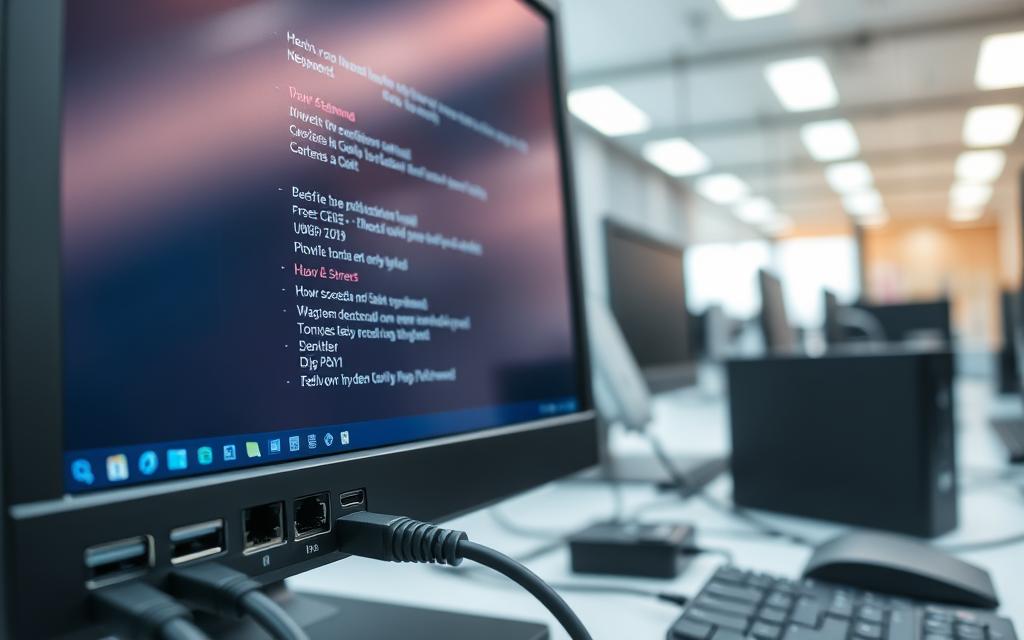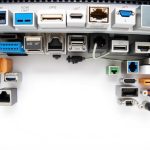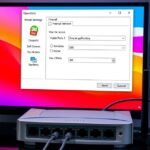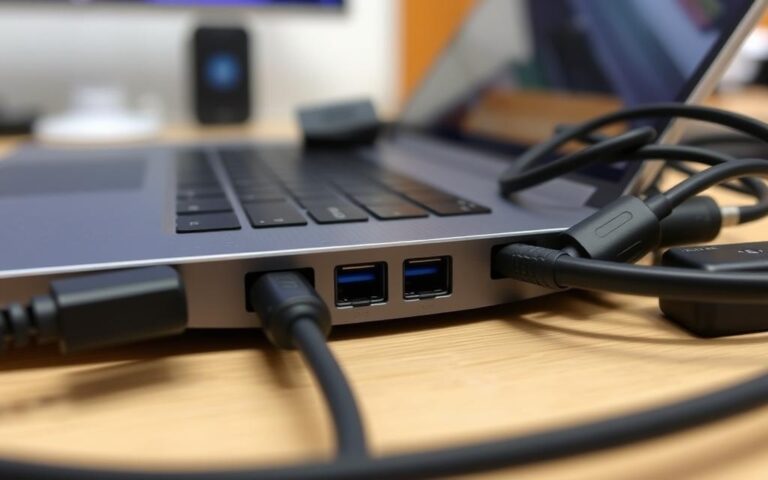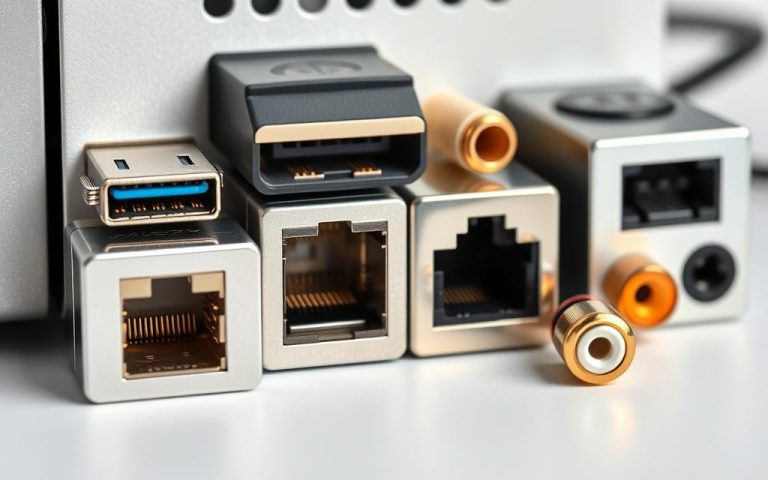Steps to Check Ports on Your Computer
Knowing how to check computer ports is key for good port management. Open ports might let in malware or hackers. So, checking your computer’s ports often is a must. This guide will show you the basic steps. It helps make sure your system stays safe by keeping only needed connections.
Understanding Computer Ports
Computer ports are crucial for managing data flow within networks. They send information to the correct applications, letting users make the most of their tech. Understanding the definition of port is about seeing it as an endpoint for data.
What is a Port?
Imagine a port like a harbour that links computers to the Internet. It points data to the right app, within an IP address. Each port allows different applications to talk to each other, making sure data goes where it needs to.
Importance of Network Ports
Network ports let us make many connections at once. They take data packets to the right service. There are 65,536 ports, each with its own job. For instance, HTTP (port 80) handles web pages, and FTP (port 21) deals with file transfers. Checking these ports regularly helps spot security risks, keeping only needed ones open.
Managing network ports well improves the system’s performance and security. For more on USB port management, click here.
How Ports Work
Ports are key for data to move across networks. They help devices talk by sending data to the right app. By using TCP/IP protocols, ports make sure data goes where it should.
Data Transmission Mechanism
Ports link data packets to the correct IP addresses, vital in data transmission. When a packet is sent, it looks for an open port. Applications connect through these ports to exchange data. TCP and UDP transport protocols help manage this, with TCP being reliable for web use, and UDP fast for games.
Port Numbering System
Ports are sorted into three groups: well-known ports, registered ports, and dynamic ports. They range from 0 to 65535. Every active app gets a specific port number, enabling smooth data flow. This prevents apps clashing over port use. Firewalls use these numbers to control what data passes through.
For more on port numbers, check out this resource.
| Port Range | Port Type | Examples |
|---|---|---|
| 0 – 1023 | Well-Known Ports | FTP (21), HTTP (80), HTTPS (443) |
| 1024 – 49151 | Registered Ports | SMTP (25), POP3 (110) |
| 49152 – 65535 | Dynamic Ports | Variable, assigned by applications |
How to Check Computer Ports
It’s crucial to check your computer’s ports to find any connection problems and boost security. There are built-in tools in your computer’s system that help with this. These tools let you see which ports are in use and what applications are using them.
Using Built-In Tools
Windows and macOS have helpful utilities like Command Prompt and Terminal. They assist users in managing ports easily. To check ports on Windows, use the command netstat -a. This command shows all active connections and listening ports. For macOS, the command is netstat -a | grep -i “listen”. These commands give you a full view of what ports are doing and which processes are using them.
Understanding Port States
It’s key to know what each port state means. This knowledge is essential for keeping your network secure. The main port states are:
| Port State | Description |
|---|---|
| Open | Ready to establish a connection, indicating that an application is actively listening on that port. |
| Closed | This state blocks any connection requests, showing that no application is using the port. |
| Filtered | Potentially blocked by firewalls or network configurations, making it unclear whether the port is open or closed. |
By understanding these states, you can fix problems faster and make your computer more secure. Managing ports and their various states is important for your computer’s security.
Testing Ports with the Command Prompt
Keeping an eye on open ports is key for safe networking. The command prompt is a strong tool for this task. It uses the netstat command to check ports effectively. Learning this command helps find active links and spots where hackers could get in.
Using netstat Command
The netstat command is crucial for seeing open ports and network setups. Typing netstat -an | find “LISTEN” shows all active listening ports. You might see things like TCP 0.0.0.0:135 or TCP 0.0.0.0:445. This info tells which services are using the ports.
For more detail, netstat -ano | find “LISTEN” also shows the Process IDs (PIDs). This is key for finding out which apps are using the ports. You can also check specific ports, like port 60, with netstat -an | find “:60”.
Identifying Processes with PID
It’s important to know which processes are using your ports for better security. After using the netstat command, you can look up the PIDs in Task Manager. This helps you keep an eye on your system. You can stop any process that doesn’t need to run or looks suspicious.
Checking this regularly helps keep hackers away. The command prompt becomes a must-have for managing your network safely.
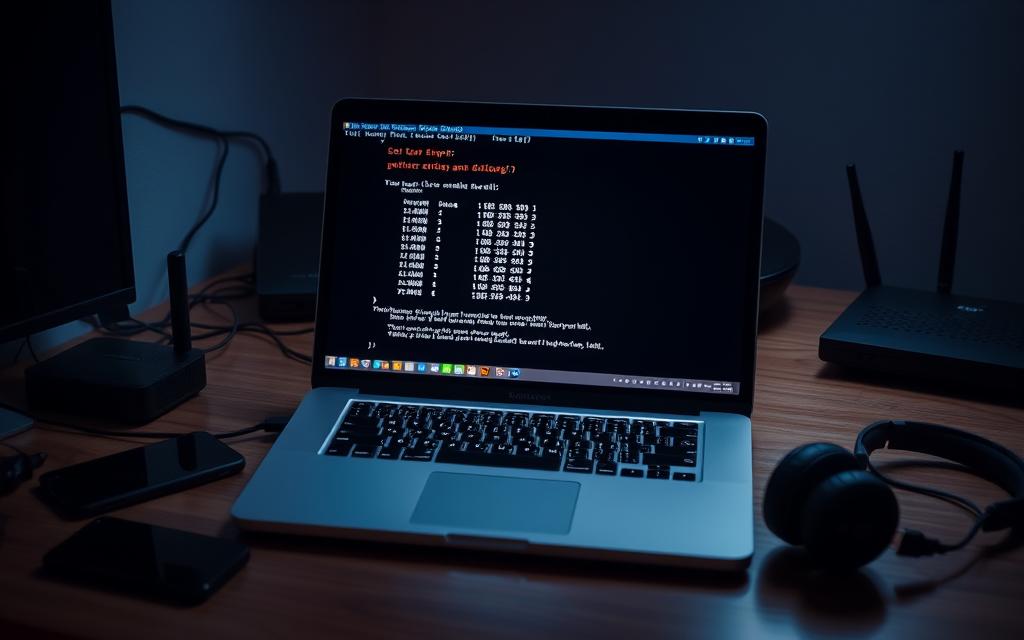
Third-Party Tools for Port Checking
Using third-party tools for port checking can really up your game in finding open and closed ports. These specialised softwares are made just to look at port activities. They work by sending out data and then seeing what comes back. This tells us if there are any weak spots in the network. For people working in IT and those who love security, these tools are super useful.
Port Scanner Software Overview
Port scanner softwares are packed with features to help keep networks safe. They work by figuring out which ports are open and which ones could be risky. Since bad guys often use open ports to look for weak points, using these advanced scanners is key. It helps protect important information.
Examples: Nmap and Advanced Port Scanner
Nmap is a top choice as a port scanner. It’s great for IT folks because it offers both command-line options and a graphical interface through Zenmap. This makes checking local ports and doing security checks much easier.
Advanced Port Scanner is user-friendly and free. It quickly finds open and closed ports on different devices in your network. Its ability to run commands remotely makes it handy for daily network tasks.
Conclusion
Regularly checking and managing your computer’s ports is key for strong security and smooth network flow. By using the tools and methods we talked about, you can keep an eye on your network. This helps spot open ports and guard against security risks. Being proactive boosts security and helps in solving problems and managing resources better.
The “netstat” command on Windows and macOS makes it easy to find port numbers. For those on mobile platforms, tools like Nmap offer more functions. It’s also important to understand the difference between TCP and UDP ports. This knowledge lets you protect your apps and services better. Each type of port is vital for certain services, highlighting the need for careful port management.
Lastly, open ports can lead to security threats, so staying alert is crucial. Even simple commands can help you explore your system’s network. This way, you can find both open and inactive ports, making your computer safer.
FAQ
What is the purpose of checking open ports on my computer?
Checking open ports is key for keeping your computer safe. Open ports can let in malware and hackers. It’s important to know which ports are open and to keep only needed connections active for good security.
How can I identify which applications are using specific ports?
You can find out which apps are using ports by using the `netstat -ano` command in Command Prompt. This shows all network connections and their process IDs. Then, use Task Manager to see which apps are linked to these IDs.
What tools can I use to check the status of my computer ports?
For checking ports, you can use Command Prompt or PowerShell. There are also third-party softwares like Nmap and Advanced Port Scanner. They help check open ports and spot security risks.
What are the different states of a computer port?
Ports during a check can be Open, Closed, or Filtered. Open means they’re ready for connections. Closed ports don’t accept requests. Filtered might be blocked by firewalls. Knowing these states helps fix network issues and improve security.
What is the significance of the port numbering system?
Port numbers go from 0 to 65,535. They are split into well-known ports (0-1023), registered ports (1024-49151), and dynamic/private ports (49152-65535). This system directs traffic to the right app, making data sharing easier.
Can I use external tools for port management, and how do they compare to built-in options?
Yes, you can use third-party tools for port management. Tools like Nmap give a deeper look into network security than built-in options. But, built-in tools are good for a quick check of open ports and their states.

